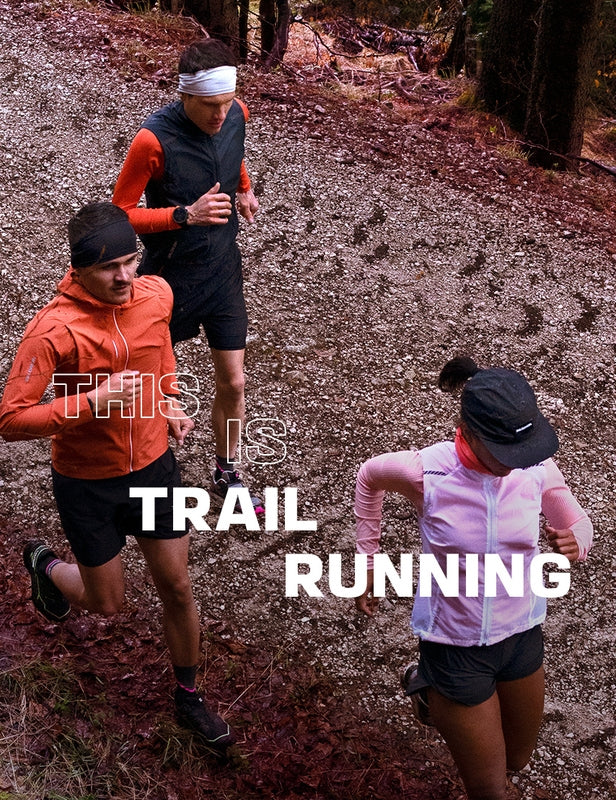HOW TO MANAGE YOUR EFFORT IN TRAIL RUNNING
Have you put your name down for your first trail running race? Were you tempted by a longer distance or an ultra trail? With tips from Francois d’Haene you can manage your race so you can enjoy it all the way to the finish line!
FIRST RACE : IT’S THE TAKING PART THAT COUNTS
For your first races, your time, your finishing position and even your level really doesn’t matter. When you start trail running, it’s not for the competition but for the personal challenge…and to have a good time outdoors!
Maybe you’ve been following a specific trail running training plan for this race and adopting a trail running diet. Don’t think about the sacrifices you’ve had to make or the hours of training you’ve had to put in but think more about the time you’ve enjoyed being outside. Don’t put unnecessary pressure on yourself so that you can enjoy the race.


The main goal for most trail runners will be to cross the finish line feeling good and having enjoyed the experience. The satisfaction of seeing that all your preparation has paid off and that you’ve managed your race well, comes before your position. That’s the spirit of trail running!
LISTEN TO YOUR BODY
You need to be able to read your body’s signals in order to have a strong finish in a race. As for all endurance sports, you’ll need to manage your fatigue regularly and throughout the race.
Check in with yourself and ask yourself these questions regularly throughout the race:
- How am I feeling physically and mentally?
- How has the race gone up until now?
- Have I been eating and drinking?
- Can I feel any particular muscles more than usual? Am I cramping? Do I have pain anywhere?
Drink water or eat food according to your needs and adjust your speed if necessary.
--- Discover our selection of hydration vests : for HIM | for HER
Don’t try to run all of the uphills, especially during mountainous races involving a lot of climbing. Walking is an integral part of trail running. Often, it’s actually more efficient to walk fast on steep parts than it is to run. Your heart rate will recover and you’ll save energy.
Think about the race as a whole :
"When doing an ultra trail, I know that it’s going to be a long day out. I must be able to eat and drink regularly."
François D'Haene
If you get a cramp, it can be a sign that you haven’t been drinking enough water or you’ve pushed too hard over a short section and any your muscles are fatigued. You will want to rehydrate yourself slowly by increasing your fluid intake and slow down temporarily so you can shake out and release any tension. It’s completely possible to get rid of a cramp during a race, you just need to try and listen to the warning signs.
--- Discover our selection of flasks and hydration accessories : for HIM | for HER
Try and get used to eating and drinking during your training sessions…and don’t change your routine the day of the race!


CONTROL YOUR BREATHING
Your main goal is to finish the race and not to push too hard. Be careful not to start too fast, this often happens as people get carried away at the start line. If you start too fast, you won’t have enough energy in the second half of the race. Start slowly and settle into your own pace without worrying about what other racers are doing, that way you’ll have enough energy at the end of the race to overtake them all!
You can keep a check on your heart rate using a heart rate monitor, but your breathing is also a good way to monitor the intensity of your effort. You must be able to talk most of the time. This way, your heart rate won’t soar and you’ll stay within your endurance heart rate. If this is not the case, you need to take your foot off the gas!
Of course, you’ll be breathing hard and possibly out of breath during the harder climbs. That’s completely normal. On the flat parts and during easy climbs, you should go at a pace that allows you to eat and drink comfortably.
When running downhill, you should try and relax. Your muscles will thank you at the end of the race!
THE END OF THE RACE…TIME TO ACCELERATE!
You controlled your pace throughout the race and didn’t push too hard early on. You ate and drank regularly and listened to your body, and now you are in the last few kilometres and you still have some energy left. You’ve checked out the competition. Now, it’s time to accelerate!
After you’ve competed in a few races you can start thinking about your race position, the amount of climbs in the race, or the length of the race. Maybe you’d like to try an ultra trail race? After a careful start to your trail running career, you can now start to determine your limits. Make sure that you prepare well and progressively increase your training intensity. The length and intensity of your races will naturally change with your experience, but even with years of training, it’s how well you manage your effort and pace yourself that will allow you to cross the finish line, with a smile!



